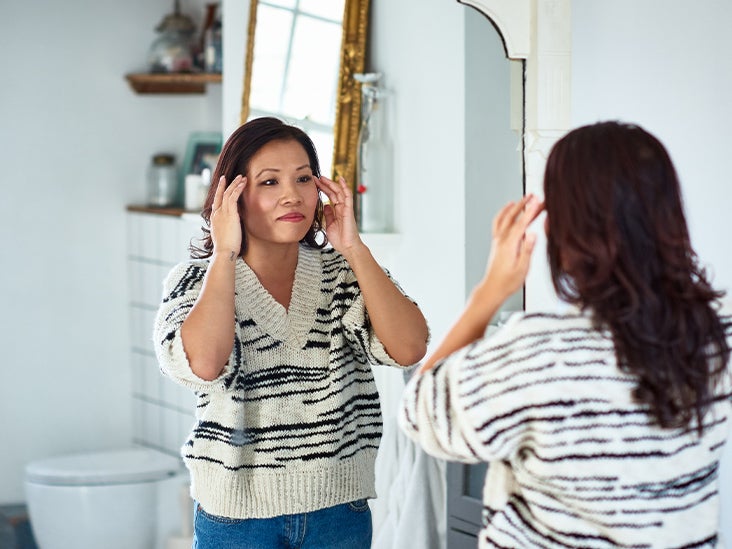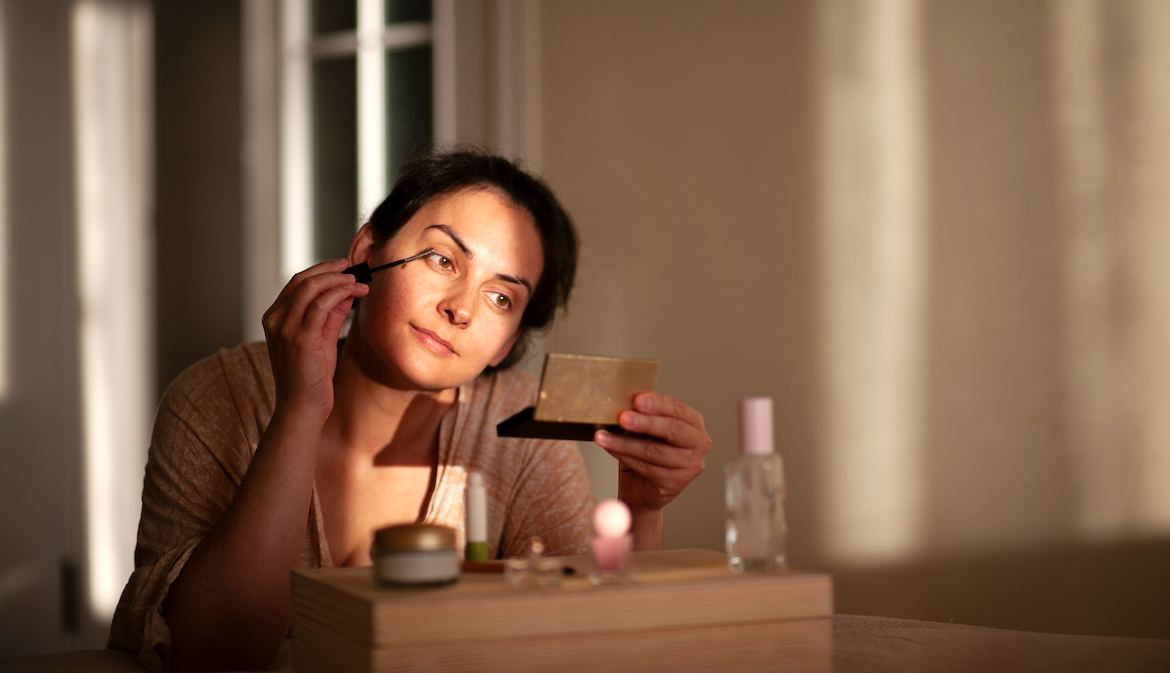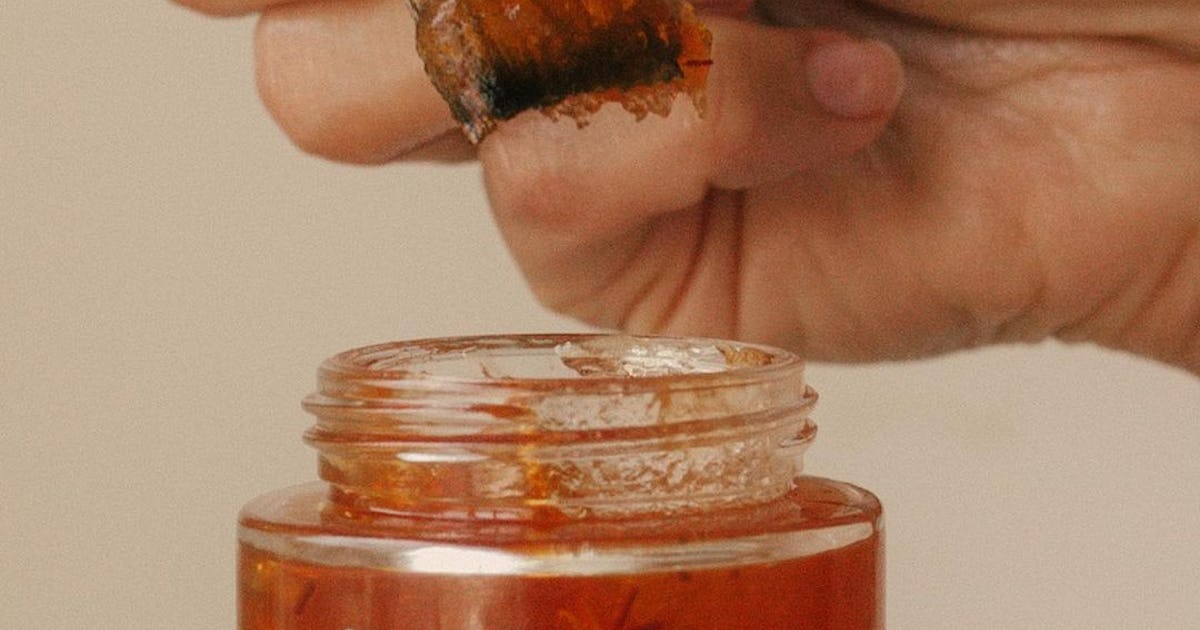
We include products we think are useful for our readers. If you buy through links on this page, we may earn a small commission. Here’s our process.
Good-bye, cutting your bangs. Hello… dermaplaning?
This skincare ritual is another social media-driven beauty trend that’s exploding in popularity.
If you’ve never heard of it or are seeing photos for the first time, the pictures and captions may feel confusing. Some swear it’s the secret to having smooth, soft skin.
But there’s a razor involved.
Why? Because dermaplaning involves shaving your face.
“A lot of people are very confused by it for good reasons,” says Cassandra Bankson, a medical aesthetician. “Is it female face shaving? Is it exfoliating? It’s a little bit of both. You can remove facial hair by waxing and tweezing, but dermaplaning is a way to remove that and also exfoliate the skin at the same time.”
Still, it’s not exactly new. Icons like Marilyn Monroe and Elizabeth Taylor reportedly used dermaplaning.
Bankson thinks the reason dermaplaning was somewhat under-the-radar until now is that, in part, people didn’t like talking about shaving their faces.
“Face shaving was a taboo topic that no one ever talked about until recently,” Bankson says. “A lot of women have been using razors or cheap brow trimmers behind closed doors to exfoliate or remove facial hair at home.”
Bankson says no one should feel ashamed about their facial hair or feel the need to remove it.
If you do want to get rid of the thin, vellus hairs on your face or achieve smoother skin through regular exfoliation, she says dermaplaning is an accessible option.
That said, there are some drawbacks, and it’s not for everyone.
Read on to find out whether dermaplaning is the right treatment for your skin.
There are lots of reasons to dermaplane, including:
- hair doesn’t grow back thicker
- easier makeup application
- it’s quick and simple
- it’s low cost
- it leaves your skin feeling noticeably smoother
Hair doesn’t grow back thicker
Experts say that dermaplaning effectively removes unwanted vellus or “baby” hair from the face.
What’s more, Bankson says that dermaplaning prevents hair from growing back thicker, unlike tweezing and waxing.
Why is this?
Bankson says that when you tweeze or wax your hair, you may remove the papilla, the area located at the bottom of hair follicles.
The papilla plays a crucial role in hair:
- formation
- growth
- cycling
- regrowth
“Removing the papilla can cause hair to grow back thicker…if the base of the hair follicle and papilla are damaged,” Bankson says. “When shaving or dermaplaning, the hair is cut at the base of the skin.”
This means dermaplaning leaves the papilla intact.
It makes makeup application easier
Since dermaplaning removes dead skin, it’s another way to exfoliate. It may leave your face feeling soft and clean.
This can help simplify another step in your beauty routine: putting on makeup.
“Dermaplaning allows you to have a nice, even, smooth canvas to put on makeup,” Park says.
It’s quick, simple, and cheap
A trip to a spa can feel like a treat, but sometimes we don’t have the luxury of time or extra cash to spend. Dermaplaning is something you can knock out quickly at home with spa effects.
“Doing it at home can save money, and it’s convenient,” says Park. “You can do it whenever you need or want, and it only takes a couple of minutes.”
Bankson says that having it done professionally can run you anywhere from $75 to $200.
It gives you smooth, soft skin
Bankson knows beauty is more than skin deep, but she still loves the way dermaplaning makes her feel.
“It gives you a new look,” she says. “The outside world might not even recognize it, but you might notice your skin glows more. I love the feeling of smooth skin.”
If it works for you, that may be the only benefit you need.
While there are plenty of reasons to sing its praises, dermaplaning has some downsides. These can potentially include:
- skin irritation
- dryness
- sensitivity to sunlight
- risk of cuts and scarring
- bacterial spread
Thick, rapid facial hair growth may also indicate a more serious condition, like polycystic ovary syndrome (PCOS) or hirsutism.
It can irritate the skin
Dermaplaning is typically a simple process, but accidents happen.
“There is a risk of cutting or nicking the face,” Bankson says. “If you scratch the face, it could cause a cut or scar.”
Bankson suggests using a sharp razor with a safety blade or going to a professional if you’re nervous.
It won’t help with the causes of facial hair
Though dermaplaning has its share of purported skin care benefits, Bankson and Park warn that it won’t help everyone with facial hair.
If you’re concerned about the amount of facial hair you have, Bankson and Park suggest seeing a doctor to rule out other conditions, like PCOS or hirsutism, which can cause thick, rapid hair growth.
They say it’s best to get those conditions diagnosed so you can get the best treatment rather than attempting to mask them at home.
Though exfoliation can help with clogged pores, Park also advises patients with acne to be wary of dermaplaning.
“The razor can spread bacteria and worsen irritation,” she says.
You can overdo it
While dermaplaning may be a relaxing part of your self-care regimen, there’s such thing as too much of a good thing.
“It depends on how much facial hair you have, but I would recommend doing it once or twice per month,” Park says.
Doing it more can irritate the skin, cause dryness, or make you more prone to sunburn.
It isn’t compulsory
Bankson says she grew up getting bullied for her skin conditions, including acne. She started using products to try and fix everything she felt was “wrong” with her.
This made taking care of herself feel more like a job, and she doesn’t want anyone else to feel that way about skin treatments, including dermaplaning.
Though society may say women and female-presenting individuals shouldn’t have facial hair, she thinks people should feel free to embrace themselves.
“Do it if you want to,” she says. “Do it if it makes your face feel smoother, your makeup goes on nicer, and if it’s a choice, not a chore.”
If you’re new to dermaplaning, Bankson says you won’t just want to grab the same razor you use to shave your legs.
“Those razors usually have three to five blades,” she says. “When you’re cutting [facial] hair, it’s a little thinner, and the skin on the face is thinner.”
Estheticians and dermatologists often use stainless steel surgical blades. Bankson suggests leaving those to trained professionals for safety reasons.
Instead, Banskon recommends using a facial razor with a safety blade.
She says Tinkle Eyebrow Razors aren’t the most durable, but they’re an affordable option that will do the trick.
For something you won’t have to discard after one use, Bankson suggests opting for Versed Instant Gratification Dermaplaning Tool or the Dermaflash LUXE Dermaplaning Exfoliation & Peach Fuzz Removal Device.
Joyce Park, MD, a board certified dermatologist and spokesperson for Schick Hydro Silk, also recommends having a hydrating serum or facial moisturizer on hand to keep the skin from drying out.
The process itself is simple, and you won’t need shaving cream.
“At-home dermaplaning should be performed on squeaky clean, dry, taut skin for the most effective exfoliation,” Bankson says.
Follow the steps below for the best experience:
- Wash face and pat dry.
- Hold the skin taut with one hand.
- Hold your device at a 45-degree angle.
- Gently glide your device across the skin in short, light strokes.
- Finish with moisturizer.
This will “remove dead skin cells, debris, and other peach fuzz quickly and effectively,” says Bankson.
Be safe
When dermaplaning, always use a clean, sharp razor with a safety blade that’s designed specifically for facial shaving.
When it comes to dermaplaning, don’t overdo it. Once or twice per month should be enough. Doing it more often may cause irritation.
If you notice irritation after you try it, take a break and talk with a dermatologist. Dermaplaning may not be for you.
Dermaplaning has surged on social media recently, but it’s been around for years.
The process removes facial hair and exfoliates the skin, leaving you with a smooth canvas for makeup application. You can do it yourself or see a professional.
If you do it yourself, first things first: Make sure it’s something you want to do. There’s nothing wrong with looking a certain way, including having facial hair, regardless of your gender identity.
Also, check with your doctor if you know or think you might have conditions like acne or PCOS. Dermaplaning can exacerbate or mask symptoms.
Beth Ann Mayer is a New York-based writer. In her spare time, you can find her training for marathons and wrangling her son, Peter, and three furbabies.



















/https://specials-images.forbesimg.com/imageserve/604ad3acf728cc29468fec2e/0x0.jpg?cropX1=0&cropX2=846&cropY1=47&cropY2=523)
![See Inside the Amazing Homes of State Music’s Queens [Pics]](https://townsquare.media/site/204/files/2020/08/tim-mcgraw-faith-hill-mansion-california-pictures.jpg?w=1200&h=0&zc=1&s=0&a=t&q=89)











